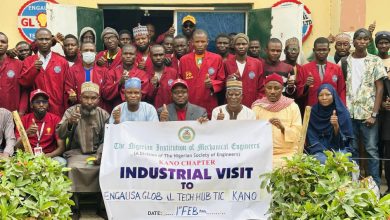
In today’s rapidly evolving world, education is no longer confined to the four walls of a classroom. With the advent of technology and the internet, access to quality education has become a global imperative. However, two significant challenges persist: language barriers and digital disparities. In this blog post, we’ll explore how breaking down language barriers and bridging digital gaps are essential steps towards enhancing competency skills and ensuring equitable access to education for all.
Language Barriers:
Language is a powerful tool that can either empower or hinder one’s educational journey. It’s no secret that language barriers can act as a formidable obstacle to acquiring competency skills. Millions of individuals around the world are deprived of quality education due to linguistic constraints. Breaking these barriers is crucial to unlock the full potential of learners globally.
Multilingual Education: Embracing multilingual education strategies can help learners access educational content in their native languages. This approach not only aids comprehension but also fosters a deeper connection with the material. Educational institutions and technology providers should work together to offer courses in various languages.
Machine Translation: The rise of AI-powered machine translation tools has made it easier to translate educational content accurately and quickly. These tools can bridge language gaps, ensuring that students can access valuable resources in their preferred language.
Cultural Sensitivity: It’s important to recognize the cultural nuances tied to language. Educational materials should be culturally sensitive and relevant to the target audience. This fosters a more inclusive and engaging learning experience.
Bridging Digital Gaps:
Access to technology and the internet is the new cornerstone of education. However, the digital divide remains a pressing issue, leaving many learners without the means to access online resources. Bridging these gaps is essential to ensure that all students, regardless of their socioeconomic backgrounds, can thrive in the digital age.
Infrastructure Investment: Governments and educational institutions must invest in the development of digital infrastructure, including high-speed internet access and affordable devices. These investments are key to democratizing education.
Digital Literacy: Equipping learners with digital literacy skills is as important as providing access to technology. Students should be taught how to navigate the digital landscape safely and effectively, empowering them to harness the full potential of online resources.
Inclusive Design: Educational platforms and content should be designed with inclusivity in mind. This includes features that cater to individuals with disabilities, ensuring that no one is left behind in the digital learning journey.
Conclusion:
Breaking language barriers and bridging digital gaps are intertwined objectives on the path to competency skill development and equitable education. By addressing these challenges head-on, we can create a world where every individual, regardless of their linguistic background or socioeconomic status, has access to quality education. Empowering learners with the tools they need to succeed in the digital age is not just a goal; it’s a global responsibility. Together, we can make this vision a reality and inspire a new generation of motivated, capable individuals who are ready to shape the future.




